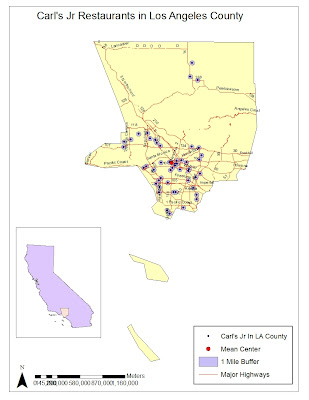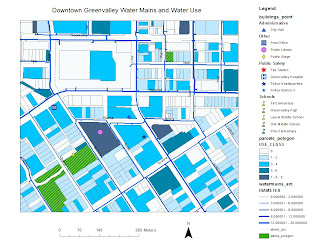China, India, USA, Indonesia, Russia, Brazil, Pakistan, Japan, Bangladesh, Nigeria
- I opened the cntry02 Attribute Table and organized the POP_CNTRY column in Descending order. This gave me the list of the most populous countries in the world
2. The Amazon River system has 15 rivers. I clicked on Select by Attribute, under the layer drop down menu I clicked rivers. Double click on “SYSTEM” = Get Unique Values then’Amazon' then Apply. Now if you open the rivers attribute table you will see all of the Amazon Rivers.
3. There are 60 cities within 500km of the Amu Darya and Syr Darya Rivers. I got this by selecting a spatial query and I applied a search distance of 500km. Then I opened the attribute table which highlighted the 60 cities within 500km of the two rivers
4. 516490670-64193450=452297229. I got this answer by using the statistic tab as a result of the spatial query minus the population of Iran
5. The least populated is the Vatican City and the most populated is Ethiopia. Select by attributes landlock=y. This function returned all of the landlocked countries ranked by population.
6. Austria, Czech Republic, Slovakia, Romania, Yugoslavia, Croatia, Bosnia & Herzegovina, Slovenia. I got this answer by creating a buffer around the city of Veszprem and identifying which countries lie within 300Km of it
7. Libya, Sudan, Central African Republic, Cameroon, Nigeria, and Niger. I got this answer by selecting the country Chad and using the Identify tool to identify all of its bordering countries.
8. Russia, 97; US 93; Thailand, 72; Turkey, 67; Poland, 50. I got this answer by doing a spatial join between cntry02, which was my target feature and cities which was the source. After this join, I opened the attribute table which stated the most cities based on the data.
9. There are three rivers that run through the country of Sudan. The White Nile, 1893km, the Nile, 3023km, and the Blue Nile 5046km. I was able to use the select by attribute then rivers systems then Nile. I used the sinusoidal projection in order to have the software calculate the lengths of the rivers. I then added a new field to the attribute table and the newly projected rivers titled ‘length’. I was then able to use the Geometry tool to calculate the distance in km
10. Russia, 1537; Canada 1355, USA 759, China 226, Sweden 173. I joined lakes and cntry02. I then opened the attribute table and sorted them by join count which then gave me the countries with the most lakes in order.
11. The lakes were first projected on a sinusoidal projection in order to calculate the area. The new field was created. I then did a spatial join between lakes and countries. When I opened the attribute table I was able to sort the lake area in square km for each of the five countries. Canada 443,509 km/sq; USA 196,856; Russia 138250 km/sq; Kahzakstan 70,869; China 51,272
12. If I had more time I would view only the cntry02 and lakes layers. I want to first get the lake area of each country.







